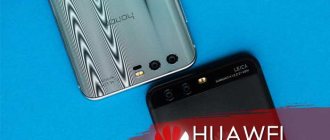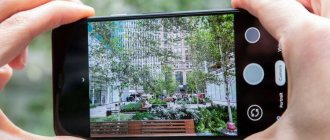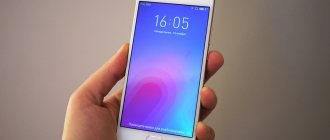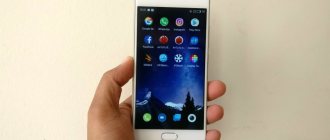What is an engineering menu
A function such as the engineering menu provides the user with the opportunity to set settings for the built-in equipment and change the capabilities of the device . Not every modern person knows why it is needed and how to open it, so our article will give detailed answers to these questions.
The engineering menu allows you to:
- manufacturers to carry out a final check of the gadget for any malfunctions;
- Service center employees configure the smartphone after repair procedures.
List of all functions
The list of engineering menu options differs depending on the specific Meizu phone model. But we will look at a basic set of functions that the owner of any version of this gadget will be able to use. This includes the following sections:
- Telephony . This section offers the following functions: changing mobile network parameters, determining the compatibility of the gadget with a cellular operator, setting automatic reception of an incoming call, returning to factory settings.
- Module tests (Hardware Testing) . Here, the engineering menu on Meizu allows you to increase the volume, check it in headphones and on both speakers of the smartphone, and identify problems with the screen, sensors and modules of the device.
- Connectivity . This category makes it possible to check the functionality of Wi-Fi and Bluetooth modules, turn off the screen when Wi-Fi Display is running, etc.
- Debugging (Log & Debugging) . Here are links to tests and utilities from MediaTek, as well as suppliers of other gadget parts.
- Location . The most common features in this category are: checking location, GPS operation, disabling A-GPS detection.
- Others . In this category you can change, for example, the font used in your smartphone.
What solutions can help?
If you are sure that the sensor stopped working after an impact. It is better to take the phone to a service center to replace the sensor.
Meizu M8 proximity sensor does not work well due to dirt. You can do the cleaning yourself. Warm up the edges of the meizu m8 , and then use a plastic card to pry off the touchscreen. Therefore, to do this you will need to remove the old tape. After this, remove all dirt, and then glue the touchscreen onto new tape. Repair xiaomi Mi A2, remove glitches and change parts, make an appointment with us.
Checking and calibrating your phone
The engineering menu is considered to be quite functional, so there are quite a few changes for the phone. Next, we will look at the main points that the user can independently check and calibrate.
Increase volume
The silent phone problem can be fixed in a few clicks. The speaker volume function, as mentioned above, is located in the Hardware Testing , Audio_ ModeSetting . Having found it, you should set the desired value (the maximum is, as a rule, 225 , but in some models it reaches only 160 ). Then you should press the Set button next to it, which will mean that you have successfully changed the volume of the gadget.
Proximity Sensor Calibration
Here, the first thing you need to do is get into the engineering menu on your phone and open the same Hardware Testing . Next you need to follow the path Sensor – Light/Proximity Sensor – PS Data Collection . Then the testing window will open, where you will need to click Get One Data. the number 0 appears in the second line , you should place your palm on the sensor and then press the same button again. Next, if the number 225 , this will mean that the sensor is functioning normally.
Before entering the engineering menu settings and starting the procedure, it is important to make sure that the proximity sensor is not covered with anything (film, glass, etc.).
Checking the accelerometer
Accelerometer calibration is required on Android devices when the auto-rotate function does not work correctly. Changing the situation through the engineering menu is not difficult. To do this, you will have to enter the already familiar Hardware Testing , go to Sensor and Sensor Calibration . Calibration will only be possible if you press the buttons in the correct sequence:
- Clear Calibration.
- Do Calibration.
Then you need to exit the menu. And the “Level” application, which is available in every Meizu device in the “Tools” folder, will help you check the changes.
What is a calibration sensor
There is a proximity sensor near the speaker on the front of the smartphone. The miniature element consists of an infrared detector and an LED. When you bring the phone to your ear, it locks the display; after finishing the call and taking the smartphone away, it unlocks.
This is done so that during a conversation a person does not press the sensor with his ear. The device reacts to an object approaching the phone using infrared radiation. The sensor calculates the distance from the object to the gadget and turns off or starts the display.
How to calibrate the proximity sensor
Important! The instructions are suitable for all Meizu and Xiaomi models that are equipped with this device. After each stage, it is advisable to check the operation of the component.
If the glass of the M5 or M6 gadget is clean and the protection has been removed, but the result has not changed, you should proceed to check:
- Open the engineering menu. To do this, you need to enter the following characters in the call menu - *#*#3646633#*#* , and then press the call button.
- In the settings, go to the Hardware Testing – Sensor tab – Light . The menu of the desired element is called PS Data Collection .
- Tap on the item Get One Data , a line with the status of the component will appear.
- The value should be “”, cover the top of the screen with your palm and check the indicator - if it works properly it will be “255».
- A strong deviation from this indicator indicates a component failure.
You can proceed to calibration, which is also performed through the M3 Note engineering menu, go into it and start setting up:
If you have any questions, please let us know Ask a Question
- Open the Light and find the Calibration (if the interface is Russian, then Calibration ).
- Tap the Calculate min value , making sure that the top of the display is not covered.
- Place a sheet of paper at a distance of 2-3 cm from the smartphone and click on the item Calculate max value until the system produces the desired value.
Calibration is complete. If the situation has not changed, then the reason lies in mechanical damage or improper installation. In this case, the service center will help, since replacement at home will not be possible.
A common problem with Meizu smartphones is the screen operation during a call. On the Meizu M3 Note mobile phone, calibrating the proximity sensor will help solve the problem. However, before carrying out the procedure, it is necessary to understand why the device is malfunctioning.
Calibration thanks to apps
The principle of calibration through the utility is almost the same as in manual mode. Everything here works automatically.
Here is a list of programs with which you can calibrate your Android device:
- Touchscreen repair.
- Touchscreen Calibration.
- Display Calibration
- Screen Repair and Calibrator
- Display Calibration
- Touchscreen Monitor Calibration App
- Screen Test Pro
- Touch Accuracy
- Screen 911
- Accelerometer Calibration Free
- Touchscreen Repair & Calibration
- Touch Screen Calibration & Test
When is calibration necessary?
Perhaps we have intimidated you a little. If you thought that absolutely every smartphone and tablet requires calibration, then this is not so. Modern technologies have allowed the creators of such devices to achieve ideal behavior of the touchscreen and accelerometer. In this regard, calibration is often not needed on new devices - they already function perfectly.
But on older gadgets, the Android operating system may behave incorrectly. Especially if the device contains a resistive screen. Fortunately, even in the old days, there were not many smartphones with this type of touch display. And now even ultra-low-cost devices have a capacitive screen, which does not require special settings.
It should be noted that some devices require sensitivity adjustment. If you calibrate the screen on Android, you can achieve a decrease or increase in sensitivity. This way you can adjust the device’s behavior to your expectations. This is especially true when buying a new device, when you cannot get used to its behavior.
Please note: both smartphones and tablets can be calibrated. The type of device is completely unimportant; all you need is the Android operating system.
Returning to new devices, they may also require calibration, but only in the following cases:
- The gadget was repaired after it fell into water;
- The device's screen was replaced;
- The smartphone was seriously hit when dropped, although it did not receive any visible damage.
Method one
First, you should use the simplest method, which involves turning the chip on/off. In the event that the problem with the Xiaomi proximity sensor was due to software errors, a conflict between applications and the operating system, this method should help.
Go to “Settings”, where we select “Applications” - “System applications”. Then you need to find the “Phone” sub-item and click on the “Incoming calls” line.
One of the items will be “Proximity sensor”, which is usually on. You need to turn it off, and after 5-10 seconds turn it on again. At the final stage, you will need to reboot your mobile device.
The procedure for calibrating the device on the Meizu M3 Note smartphone
If during the check it was discovered that the proximity sensor on the Meizu M3 Note smartphone does not work, then it is necessary to calibrate it. The process does not take much time and consists of several stages:
- activate the engineering menu by entering the previously presented combination;
- in the menu that appears, go to the Hardware Testing section, select Sensor in it and go to the Light (Proximity Sensor) tab, then you need to go to the PS Calibration subsection and click on the Calibration button;
- remove the phone case, film or glass, as well as other objects that may cover the device, wipe the display;
- calculate the value of the minimum distance to turn off the screen by clicking the “Calculate min value” button;
- Place your hand, a piece of paper or another object at a distance of 2 centimeters above the component and press the “Calculate max value” button;
- carry out direct calibration by clicking on the “Do Calibration” button;
- After completing the procedure, turn off the mobile device and turn it on after a while or reboot.
Gravity measurement - why in a smartphone?
If you remember your school physics course, the simplified formula for determining the force of gravity implies the product of the mass of a body and the acceleration of gravity. But what does this give us? More precisely, how can such information be used by a mobile device?
The first “theory” I came across on a well-known forum sounded like this:
How do you like this? Personally, I did not believe in such a fantastic explanation.
Then I saw a lot of messages, the essence of which boiled down to the following:
The gravity sensor in the phone is another marketing ploy by manufacturers aimed at increasing the interest of potential buyers. After all, you can then brag to your friends, saying, “I have such a sensor, but you don’t.”
In fact, we are talking about the accelerometer. It is designed to fix the direction and acceleration when moving the gadget. Simply put, the inertial component plays a key role:
I won’t repeat myself, just follow the link and read a detailed review, watch the video.











